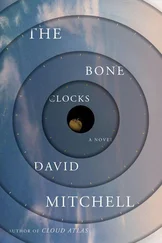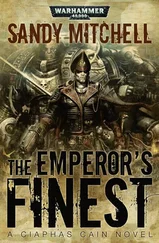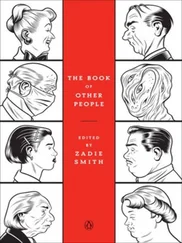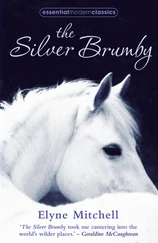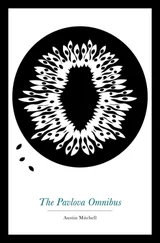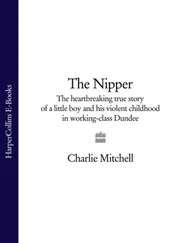‘What a horrid man,’ Mina muttered, as she walked out of the meeting room with Professor Almeini.
‘Mina, Mina. You’re so hot-headed. I wonder if you are at all suited for the world of academia and its little games of power, precedence and give-and-take.’
‘I just want what is best for the department,’ she answered passionately.
‘I know,’ he said, smiling. Then, with an air of innocence he asked, ‘what did you think of Jack?’
‘His project is quite thrilling,’ she answered. ‘Although similar projects are carried out in other countries, if this one works, it would be a first here and might even show the doubters in government that studying our past can benefit our present.’
‘I like him,’ said Almeini, ‘he’s bright and his heart’s in the right place. There’s more to this young man than meets the eye.’
Hassan’s clay tablet was on her coffee table. Mina felt a pang of guilt for having brought the ancient artefact back from the office but she often had her best ideas in the comfort of her own home. Sipping her favourite drink, a sweet mix of Bailey’s and coffee, she ran through a couple of hypotheses. She brought in a brighter desk lamp, set it up next to the table, turned it on, and studied the tablet from every angle. One idea she had, however strange it seemed might answer the riddle. What if there was something inside the clay that made it heavier? She knew of tablets that had been found within clay casings, like envelopes. Granted they weren’t usually covered in writing but if they were, they acted as seals to be opened by the recipient. Of course there were always exceptions. She could have it x-rayed. But that would require huge amounts of administrative paperwork, and she would have to wait weeks or even months before seeing any results.
Dispirited, she fiddled with the tablet. Suddenly it slipped between her fingers and hit the table. Horrified, she picked it up immediately to check for any damage. One of the corners had broken off. She looked at its cross-section but it seemed completely normal. There was nothing inside the tablet. She felt so embarrassed, both for dropping the tablet and for her mad conjectures. Maybe Nigel was right, and it was time she returned to the US.
Mina stayed in bed, wide awake, for a few hours. Finally, at one a.m., she got out of bed, turned on the light and took a long, hard look at the tablet. She went into her study and picked out the smallest chisel she could find. Sitting down by the coffee table, she took a deep breath and tried chipping off another piece from the tablet. The sound was not that of chipping clay. There was something inside. She felt like an excited child about to rip open her birthday presents.
An hour later, she was soaking a slim and shiny tablet of black stone in warm soapy water. It was possibly basalt, and was roughly 22cm long and 15cm wide, snapped at the bottom in a diagonal break. She rinsed it carefully and dabbed it all over with cotton wool. One side was entirely covered in the most delicate cuneiform lettering she had ever seen. Mina was in a state of shock. She headed to her study and found her Akkadian and Sumerian dictionaries and grammar books.
After a few hours of work, she sat back in awe. Before her eyes was a version of the eleventh chapter of the Epic of Gilgamesh , written in Akkadian! The Epic was the most famous Mesopotamian literary text, and possibly the most ancient epic in the world. It dated back four thousand years. In its final form, also called Standard Akkadian Epic of Gilgamesh, edited by the incantation priest S.n-leqi-unninni sometime between 1300–1100 B.C.E., it ran on twelve tablets. The eleventh tablet was famous for recounting the story of the primordial flood. She went back to her study, picked up an English translation of the Epic of Gilgamesh and reread the story of the flood. She then looked over her translation of the tablet. It presented a strange version of the story: some passages from the usual narrative were missing and others seemed more detailed or contained new information. For instance, there were far more measurements of the ark than in the standard flood tablet. And the narration broke off during the construction of the ark, so all the descriptions of the actual flood and its aftermath, the famous scenes of Utnapishtim sending out birds to see if the waters had receded, were missing.
She sat back on her couch, thinking about the parallels between this Sumerian myth and the Biblical account of the flood and the story of Noah’s Ark. The similarities had first been pointed out by an English scholar in the 19th century. She thought of the hundreds of scholars who, since then, had pondered the differences and similarities between the two accounts. She knew one thing for certain: the tablet she was holding displayed the only version of its kind in stone.
She could of course email the proper linguists and scholarly authorities, after all, she was not a specialist in epic textual analysis. But if she kept this tablet to herself and published a proper translation and commentary, it could be her making as an academic. She would have to explain how she got hold of it in the first place, and why it was encased in a fake clay tablet, but it would be worth it. The more she reread her rough translation the more she noticed how many odd elements there were in this text. A small detail suddenly caught her eye. Why had she not noticed this earlier? The beginning of the text conformed to other versions:
Gilgamesh spoke to Utnapishtim, the Faraway:
‘I have been looking at you,
but your appearance is not strange — you are like me!
You yourself are not different — you are like me!
My mind was resolved to fight with you,
but my arm lies useless over you.
Tell me, how is it that you stand in the Assembly of the Gods,
and have found life?’
‘Utnapishtim spoke to Gilgamesh, saying:
‘I will reveal to you, Gilgamesh, a thing that is hidden, a secret of the Gods I will tell you!
But then from here something had changed. Unlike the canonical Sumerian version in which the Gods are angry because the humans make too much noise and they decide to kill them all, this text was referring to humans having turned evil. Very much like the Biblical version. But this was impossible! The text couldn’t have been inspired by the Hebrew bible as it was far more ancient. Plus she had never heard of such a typically Jewish moralistic view in an Akkadian version of the Flood. Furthermore, most stone or metal tablets were found in the foundations of temples. But this tablet was no foundation stone.
Who could she talk to about this? She could not confront Professor Almeini and explain that she had destroyed a clay tablet to get to the stone tablet. Gradually it dawned on her that by destroying the clay casing she had put herself in jeopardy. She could not talk about her find to anyone in her field. Of course, it was a fake clay tablet, whose only purpose was to conceal the stone tablet beneath, but it was still an ancient fake. In her eagerness, she had acted like an irresponsible child, against all the ethical and scientific methodology instilled in her over years of studying. She had committed the oldest sin the book: breaking something to understand it. This discovery, far from making her famous, could even turn out to be her undoing. Nurdin, the janitor, knew she had an unusual tablet, and it was only a matter of time before everyone would know she had a new unpublished tablet at the department. What a mess. She suddenly felt overcome by a wave of nausea and exhaustion.
December 3rd, 2004
‘Five more to go’ thought Mina, stretching. She was correcting essays in her office, but from time to time she would glance at the thin stone tablet peeking out of her handbag. She was still unsure what to do about it. Why had it been encased in an ancient fake clay tablet? Obviously to conceal its importance, to make it look like any of the tens of thousands of clay tablets produced at the time. She could not understand what was so special about the stone tablet that would require such a sophisticated disguise. Moreover, the tablet was incomplete, yet still someone had found it necessary to conceal it.
Читать дальше

